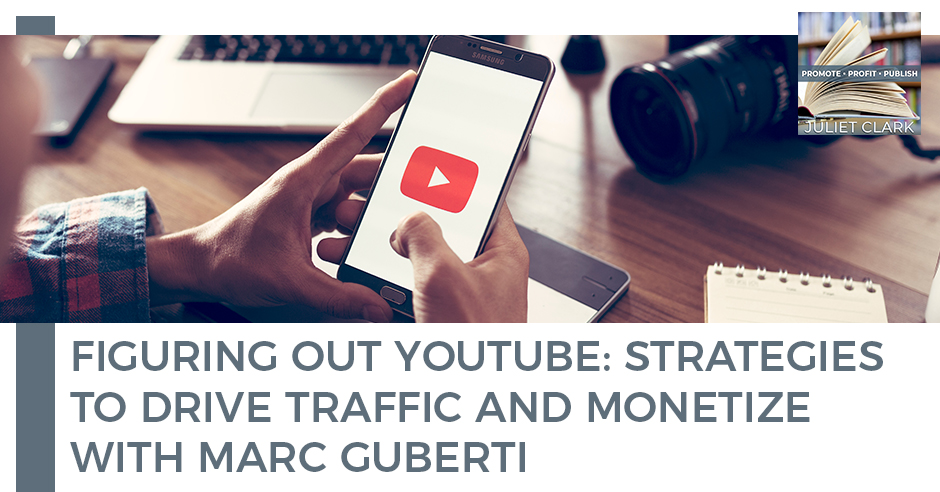
If there is one thing we know in this day and age, it is that success knows no age. Young or old, with the technologies we have now, everyone has a shot at life. At 22-years old, Marc Guberti is already making bank monetizing YouTube. He is a USA Today and Wall Street Journal bestselling author with over 100,000 students in 180 countries. In this episode, Marc shares with us how he reached success at such a young age. Driving traffic and building a name for himself, he then helps us figure out the world of YouTube—from some of the mistakes people do, to the techniques, strategies, and applications he uses. He also tackles the important metrics to look at and relates being on YouTube to podcasting. So much knowledge is here. Listen in on Marc to get the inspiration to jump ship on YouTube and success, no matter how old you are.
—
Watch the episode here
Listen to the podcast here
Figuring Out YouTube: Strategies To Drive Traffic And Monetize With Marc Guberti
I have a very unique guest and I know I always say that because I try to cultivate the best guests for you. This guy is 22 years old and making bank because he has monetized YouTube. We’re going to get a lot of education on YouTube. Marc Guberti is a USA Today and Wall Street Journal bestselling author with over 100,000 students in 180 countries enrolled in his online courses. He hosts three podcasts and several evergreen virtual summits, where he teaches people how to grow their businesses and achieve personal transformations. He coaches authors, speakers, coaches and business owners on how they can attract more traffic to their content and boost revenue and that’s mainly on YouTube and podcasting. I’m honored to be a part of the Mass Media Live Summit that we’re both going to be a part of. That’s how I’ve been driving traffic. I’m telling people that they’ve got to see this guy on YouTube. We can’t let the 22-year-old beat us out. We can’t let you do this to us old folks. Welcome, Marc.
It’s a pleasure. Thanks for having me.
You’re going to talk about some YouTube mistakes that people are making. Tell us a little bit about that. I know one of them is not knowing what to say in your videos, which is pretty common on a podcast too. That’s why podcasters quit as well. They think they’ve got some excitement and then they ran out of steam. How do you come up with that?
I first come up with video ideas based on what the keywords are telling me to do. I always look in my niche. I don’t want to branch out to something that I don’t feel comfortable talking about. I stay within my expertise, then I look at keywords to figure out what the topic is. It’s a matter of outlining your video, scripting it and figuring out what you’re going to say. As you get better at doing videos, it’s tempting to skip this step because right now I don’t have any script in front of me telling me what I have to say. As you do more videos, you could be more of a natural. I do feel like people who are new do struggle with, “What do I say next? How do I get more confident on camera?”
You also have a scenario where someone could be confident on camera. They do a great video but they’re not saying, “Like this video.” They’re not leading into, “Subscribe to my channel.” There are different things you can forget to do even if you’re a seasoned video creator if you don’t have that script. Figure out what video topic you’re going to do based on keyword, and then script it out like, what points are you going to discuss? Where are you going to mention products with your affiliate links? What editing do you want to have done so people could see a product and action? You have to script out those different processes.
For those people who don’t use keywords, where do you go? Where do you do that? What do you base those on?
When you look up something on YouTube to find a video, let’s say you want to look up self-publishing tips, and then a bunch of videos comes up for self-publishing tips. “Self-publishing tips” is the keyword and that won’t tell you if it’s a good keyword or not just by typing it in and seeing what videos come up. I use something called vidIQ, which is a Chrome extension that allows you to see how competitive a keyword is and how many people are searching for it. It gives you a score and based on that score, it tells you, is this a good keyword or is this a keyword you have to stay away from?
Does it scan YouTube? Is that where it finds because you said vidIQ or Vimeo. Does it scan everything out there?
VidIQ is just for YouTube.
That’s a great tip. Thank you. What you’re saying too is that people get into the videos and they don’t use their call to action when it’s not scripted. They don’t have anything in front of them. That’s the whole thing. You want someone to take action.
In my videos, I’m always saying right away saying, “Subscribe to the channel,” in the first minute. I’m always giving people a reason to hit the like button that’s relevant to the video. If you forget those call to actions, it hurts your ability to grow on YouTube.
Forgetting the call to actions hurts your ability to grow on YouTube. Share on XThe second mistake we were talking about a little bit was not paying attention to important metrics. I know you know Tracy Hazzard. We’re having a Marketing Monday Mixer Show about this because people are looking at all the wrong things. Where do they look? What do you do with those on YouTube?
YouTube gives you many different metrics to look at. The ones that matter are retention rate and click-through rates. If you have a high click-through rate, that tells YouTube that people who see your video, who see the impression, they’re going to click on it. That tells YouTube, “Let me promote this guy’s video a little more.” The retention rate tells you how long someone is sticking around on your video. If you have a high click-through rate, but people are leaving after the first few seconds, YouTube doesn’t want to promote a video because that’s like a clickbait kind of thing. You’ve got a ridiculously high click-through rate, but then no one stays for your video. It has that clickbait vibe and then YouTube doesn’t want to promote that stuff even if you’re getting a lot of clicks for your thumbnail.
Those are two metrics you have to look at the most. I would also look at impression growth because it’s something you have a little less control over. If the click-through rate and the retention rate stay the same, then it boils down to how many impressions you are getting. If you have a 5% click-through rate that is constant, then if you get 100 impressions, you get five views. If you get 100,000 impressions, that’s a lot more views. YouTube isn’t just going to hand out these impressions, but it is good to see if you get a spike in impressions. Was it because you came out with a new video? Was it because something else happened? What topics are resonating the most? The other stats, click-through rate and retention rate are more reliable, but it is good to keep an eye out on impressions because if everything else stays the same, that’s a good metric to look at.
What is an impression on there? How does YouTube define an impression?
An impression is pretty much you type a search term and a bunch of videos pop up. If the video shows up on your screen even if you don’t click on it, you see its thumbnail title, that’s an impression. It’s not super reliable. You don’t want to make that the thing that you chase. You want to focus on the other two first and then look at impressions later.
Because a lot of other videos could come up at the same time.
It’s harder to figure out how to boost impressions.
One of the other ones is not taking it seriously. What does that mean? Is it posting and running and never looking back?
With YouTube, you have to be serious in the sense that you could be posting videos thinking you’re going to be the next big YouTuber. If you give up after a month because you don’t see the results or you don’t see the subscriber growth that you’re looking for, then when you go back on YouTube again, it’s back to square one. You have to be willing to go to this thing for months. For some people, it’s years before you see that significant payoff, then YouTube is able to pay your bills. YouTube and the affiliate revenue you generate is able to pay things off. You do want to take it seriously with the amount of time you spend on creating the script. It’s not like you come up, record yourself, shoot the video and then you’re done. There’s the scripting to figure out what call to action, how do you make money, not just with Google AdSense but beyond that and doing high-quality editing to enhance the viewer experience. It’s a matter of how much time you’re willing to put into YouTube and how long you do it over time and then the results will come.
I want to define for people because you said two different things there about Google ad revenue and affiliate. How are those different and how should you use those?
Google AdSense is available for people who have over 1,000 subscribers and over 4,000 hours of watch time within the past 365 days. Google AdSense can be a stream of full-time income, but you usually see that from people who are on that trajectory to 100,000 subscribers. For a lot of people, especially in the beginning when they first hit that milestone, it’s nice pocket change but it’s not going to be life-changing. Affiliate revenue, on the other hand, you could be doing this from day one even before Google AdSense kicks in. One of the things that I promote on my YouTube channel is Publisher Rocket, which is great for self-published authors who want to do keyword stuff. It’s similar to vidIQ but for self-published authors. When people buy that, I make a commission. That goes for any of my products or any other affiliate link. For instance, if you make $200 for a sale from something you’re promoting and you get one sale out of 50 people who view it, then you’re getting paid on average $4 per view, which is much harder. That’s not even possible from a Google AdSense standpoint. You’re never going to get paid $4 per view at Google AdSense.

Figure Out YouTube: One of the big mistakes people make with promotion is they figure it out on the fly as soon as they come out with a new piece of content.
I want to go back to something you said there though, because YouTube like Amazon and other places, when we deal with Amazon, you said that you need 1,000 subscribers and 4,000 hours. I want to bring that up to you guys. That is important. On Amazon, people used to cheat and they’d have people like their book and they’d have people buy it. They had reviews and all sorts of scams. I love that you said that on YouTube because that keeps people from buying traffic, which isn’t going to help you convert. Can you explain that a little why that bought traffic doesn’t help you? Because I don’t think people understand that.
Bought traffic, you’re losing money. I get why people like the idea because of videos with 100,000 views. One of the things YouTube looks at is retention rates. If you’re paying for views, but they’re only sticking around for two seconds. If you’re going to a click farm and you’re paying them $100 for 100,000 views and you have a ten-minute video, they’re not going to watch a million minutes of your content. They’re going to click out and then you’re going to see a 5% retention rate. I don’t know if YouTube could see a spike in views and then it drops. They probably see something in their algorithm, but it’s also like, “People are clicking this, but are not interested at all in staying around.” Even if it was a great video and it has a 40% retention rate with your 200 viewers, the extra surge of views that you bought kill your retention rate and that whole video. It looks cooler to have that many views, but you’re losing money and you’re losing the ability of the long-term growth you could have on YouTube. Once one of your videos takes off, a few of the other videos you wouldn’t have bought of taking off too.
I want to point out that the whole point of this is conversion. Buying that traffic and having that low retention rate, that doesn’t get people to call to action and that bought audience is not going to purchase. You haven’t achieved anything except maybe a little bit of ego, “I have 100,000.” Not looking at past videos to see what you can do better. That was one of the other tips that you gave us. There’s always the opportunity to edit like going back and adding cards. There’s that opportunity as well. What are you looking for when you go back to look at these?
I always look at views and retention rates. If I see a video that has a lot of views but the retention rate is so bad, I’m going to put cards to the point where people want to leave and give them a higher value video. You could go back and add cards and end screens, but it’s not like you could add an entire clip to a video or upload a different video to take its spot. For those videos that are getting a lot of views but not that much retention rate, use cards at those points where people are clicking off. You can also look to see, what are your videos with high retention rates? What are you doing? Are you doing more edits? Are you doing fewer edits? What level of editing?
There are some YouTubers who will dance and then they’ll move over. They create a bunch of clips like that and their videos do very well. You know they’re doing well because these YouTubers keep on doing it. The data told them this was bad. They would be stopping and not doing that. You want to be looking to see what are your videos have higher retention rates and why. Watch it and try to figure out why it has viewers? Why do your videos have low retention rates for ones that do and then adding cards at the spot? If you know people tune off at the two-minute mark, add a card at the 150 mark so that before someone’s thinking of leaving, they see your suggested video and go there instead.
I realized a lot of people may not know what the cards are, what the end screens are and things like that. Can you explain those?
The end screen is at the very end of a video. If you’ve ever seen a few videos that are being suggested at the end of a channel, it’s all of their content, that’s an end screen. You usually see a picture of the person. You hovered to that picture and you could subscribe to their channel. The end screen, you have the opportunity to promote your channel and promote your videos and playlist. A card is like in the middle of a video, you could have something pop up on the top right that leads people to another one of your videos that you suggest. You pick which video that one is. If you’ve ever watched a YouTube video where someone says, “I created a video on this,” and then something pops up on the top right. That’s what a card is.
For those of you who podcast and you’re recording, you need to have that YouTube channel with those podcasts over there as well in addition to all the distribution points.
If you’re on YouTube and podcast and you’re repurposing your podcast episodes for YouTube, the call to action I would emphasize at the beginning of the show is to subscribe because people get that whether they’re listening to your podcast or watching you on YouTube. “Leave a review,” is podcast only and “Like and leave a comment” is YouTube only. I would drive the point to subscribe as I call to action.
If you’re doing a podcast, do both or would you add it in later? If you’re reviewing a podcast, “Subscribe and review.” If you’re seeing this on YouTube, “Subscribe.”
I would do just the subscribe. If you want to add a clip at the beginning or at the end of either one and then add that call to action specific to the platform, you can do that. My only thing with that is part of looking at retention rate is how many people make it to the end. The ease of being able to take the podcast video format and then easily put it into YouTube versus creating custom clips for each of them. I do six episodes a week. That would be something harder for me to do.
For YouTube, the key thing is to tie it to what you're offering. Share on XI am running into all these. Everybody that I’ve interviewed has a daily podcast. I don’t know how you guys get the time. That’s incredible. This is the biggie for people, not promoting well-enough. What do you need to do to realistically promote if you want to monetize?
One of the big mistakes people make with promotion is they figure it out on the fly as soon as they come out with a new piece of content. What I encourage the readers to do is take out a sheet of paper or note or whatever and write down all of the platforms that you are active and that you are on and providing value to your community. In doing that, you are in a sense creating a marketing plan. For each of my YouTube videos, I publish on YouTube but I’m also telling my email list. I’m posting it in one of my Udemy courses. I’m putting it on Facebook, Twitter, LinkedIn and Instagram. I know where I have to promote the video before I start promoting. It feels more systematic. It feels getting more into the emotions than like, “I should figure out how to promote this thing.” That’s what you do on the initial launch. Feel free to talk about it if it does well. Let people know the status of your video. Let people know how your audience is engaging with it. It’s better to do one or two videos each week than a video each day because you want the videos to get more views and more engagement. That’s going to tell YouTube that you have some winners on your channel.
I was thinking of LinkedIn. I think you could do what I do with my podcast on YouTube. When I have people inquire and I’ve talked to them and I do a podcast that fits in with their questions and where they’re struggling, I send it to them in their inbox as well. You could probably do that with YouTube as well.
Since it’s to the person, for YouTube, you could get that person to like and just as important, leave a comment because likes and comments are going to push your video up in the algorithm.
You and I talked a little bit before we started here about how my people use the quiz platform. We use it on social media, on the podcast and from the stage very effectively. It’s a great way to capture the room. If you’re over on YouTube, what’s the best way to get people to click into that quiz so that you can capture that YouTube audience instead of using like an eBook? What would your recommendation be for my quiz people?
My recommendation is to create custom YouTube videos based on how the person does on a quiz. You could say, “Here is a customized YouTube video based on how you did on the quiz.” You would create YouTube videos based on score ranges. If it’s from 1 to 10, you’re not creating a video for like 1, 2, 3, 4, 5. You’re doing like 1 to 3, 4 to 7, and 8 to 10, something like that. With these YouTube videos, you can make them unlisted, which means it’s not like they could scroll through your videos to find the one that’s meant for them. With YouTube, people will scroll down until they see what they’re looking for. If you make it unlisted, they can’t do that. It’s a way to say, “Thanks for taking the quiz. I saw you got an intermediate level,” let’s say 4 to 7. “Here’s my advice to you.” That’s the type of video you can give them and the next steps in that video as well.
That is such a wonderful way. You can look at your categories and your scores. I don’t know that I would do this for everybody because the low commitment people are usually drive-by looky-loos. What a way to connect with those people by giving them that custom YouTube and what he is talking about is you can make them so only the person that you make it for can see that link. It’s not like I’m going to get on and go, “Marc, you sucked at this and you did well here.” Nobody else is going to see it. That’s a great idea. What a great way to use those quizzes. Do you mind if I steal that idea?
Yeah, go for it.
I’m going to try it and share that with my clients. I think it would be an amazing way to connect with those people on a bigger level and be able to offer them if they’re high commitment that strategy session again. You get a mini-session and then you get an actual “Let’s talk” type of session as well. What else do we need to know about YouTube? The products, the branding, what else do you think is important here? You don’t have to address those, just whatever you think.
For YouTube, the key thing is to tie it to what you’re offering. It could be tempting to pursue something that has nothing to do with your business, that doesn’t connect with what you’re doing or something similar to what you do but isn’t what you do. I would have a way of being able to mention something in each video as I mentioned Publisher Rocket. I do a lot of videos on my channel about self-publishing and how authors can make more money with their books. I do mention Publisher Rocket and each time I mentioned it, there’s a little screen capture of me using Publisher Rocket. I do work something like that into each video, whether it’s that or an email thing like ConvertKit or something like that or one of my own programs because that’s going to be something that allows me to make revenue from my videos. AdSense can be great if you have a lot of subscribers but promoting your own programs and promoting affiliate programs when it makes sense allows you to get to that point of making several dollars per view, instead of the few dollars for every thousand views, which is what Google AdSense usually does.
I can’t ever remember clicking on an ad. I always anticipated, “Where’s that skip?” I’m sure I’m not alone on that. Nobody likes to have that overt selling. You have a lot of books in the background. I’m impressed. I’ve written nine. How many do you have?
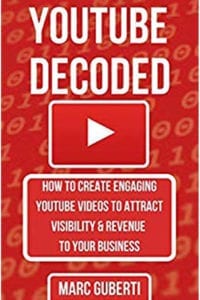
YouTube Decoded: How To Create Engaging YouTube Videos That Attract Visibility And Revenue To Your Business
That’s not all of them. I only started doing paperbacks. I’ve done a total of 26 but those are some of them.
That’s more than a book for every year of your life. That’s incredible. How do you write to them so quickly?
I create an outline for each book and I go into it. I only do 1,000 words per day. My books are relatively short. I go anywhere from 16,000 to 20,000 words. I’d rather have a few 80-page books than one 300-page book because the 300-page book takes so much longer to write. I’ve done that. The 80-page book allows you to go deep enough. It’s a quick write and it’s a quick read. If you’re at a book signing, people have to carry the books around that they collect. People have said like, “I’m so happy your book is so short because I could put it in my suitcase or I could carry it around in my bag.” It’s something that’s easier to carry too.
I have one coming out called Pitch Slapped. It is short, direct and to the point. I used to be a novelist and I wrote mystery novels and those were obnoxious long. I don’t think people have the attention span for that anymore when they are trying to learn something like the YouTube Decoded. If you’re trying to learn something, 300 pages are never going to get read, especially since we all have to ADD these days. It’s like, “Next shiny object, here we are.” Anything else you’d like to share with us?
On the YouTube front, we’ve covered a lot of ground. Have those calls to action. Think about how you’re going to implement the different things from this episode because that’s how you’re going to get the most value from this experience.
He’s given us a lot. I’m going back and putting cards in. We didn’t cover descriptions. Tell us about descriptions because I know when the company I use posts my podcast, there are no links in there. There should be links.
I know I keep doing Publisher Rocket. I might as well be getting paid by them at this point. I have the link in all my videos through them or through some other affiliate thing. Right now if I say, “Get Publisher Rocket,” and you get it by doing your own Google search, I don’t get a commission for that. If I say, “Get Publisher Rocket, the link is in the description,” and people click it. One person reached out to me through email and said, “I heard your video about Publisher Rocket. I like the tool but you didn’t put the link in the video. I want to buy it from you because of all the free content that you’ve given me.” Not only did that allow me to be like, “I got to put this link in. I forgot,” which by the way, it’s now my upload defaults so I won’t forget again for that. The person ended up buying Publisher Rocket. You get a community like that from your videos and then mentioning tools and stuff like that with the links rather than shout out to this tool resource allows you to make more revenue from your videos.
Someone pointed that out, so I’m going back through those along with the cards and all the other stuff. I can’t even stress to you how simple this is. I did one before we got on. It took me maybe seven minutes to add, and most of it is because I’m still fumbling. It’s all brand new. I’m sure it’ll be easy-peasy once I get it going. You have some upcoming courses and some things where people can find you. Do you want to share those?
We are going to be doing a five-day YouTube mini-course, which is going to get you into the swing of using YouTube to grow your business.
If I wanted to hire you or find out more, where would I go to do that?
If you want to schedule a free call with me to see if we’re fit if you want help with podcast, YouTube coaching or management stuff, MarcGuberti.com/strategy is the place to go.
Marc, thank you so much. I am excited to hear you talk because I’m sure there’s so much that I need to learn about this. Thank you so much for being on.
It’s my pleasure. Thanks for having me.
Important Links
About Marc Guberti
 Marc Guberti is a USA Today and Wall Street Journal bestselling author with over 100,000 students in over 180 countries enrolled in his online courses. He hosts 3 podcasts and several evergreen virtual summits where he teaches people how to grow their businesses and achieve personal transformations.
Marc Guberti is a USA Today and Wall Street Journal bestselling author with over 100,000 students in over 180 countries enrolled in his online courses. He hosts 3 podcasts and several evergreen virtual summits where he teaches people how to grow their businesses and achieve personal transformations.
He coaches authors, speakers, coaches, and business owners on how they can attract more traffic to their content and boost revenue.
Love the show? Subscribe, rate, review, and share!

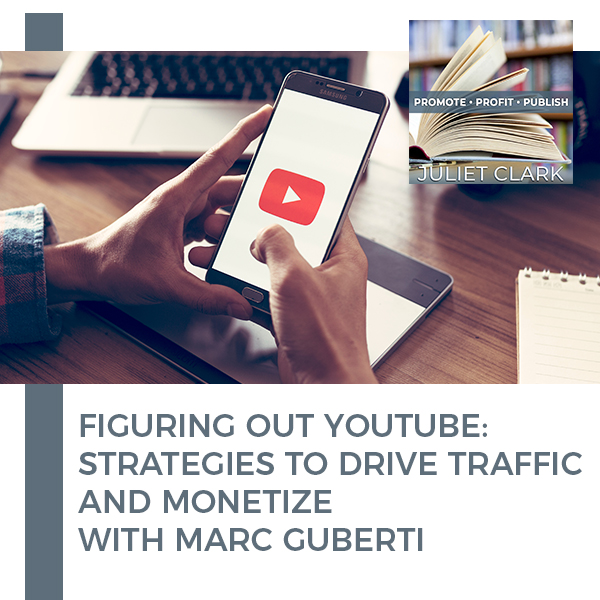


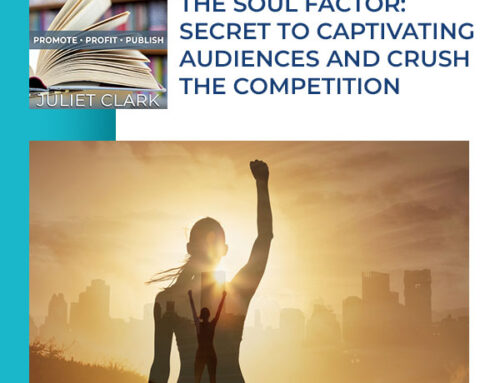
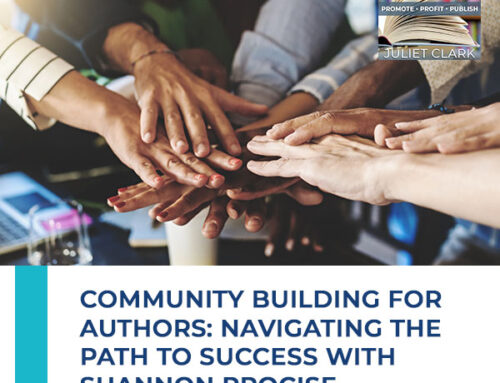



Leave A Comment